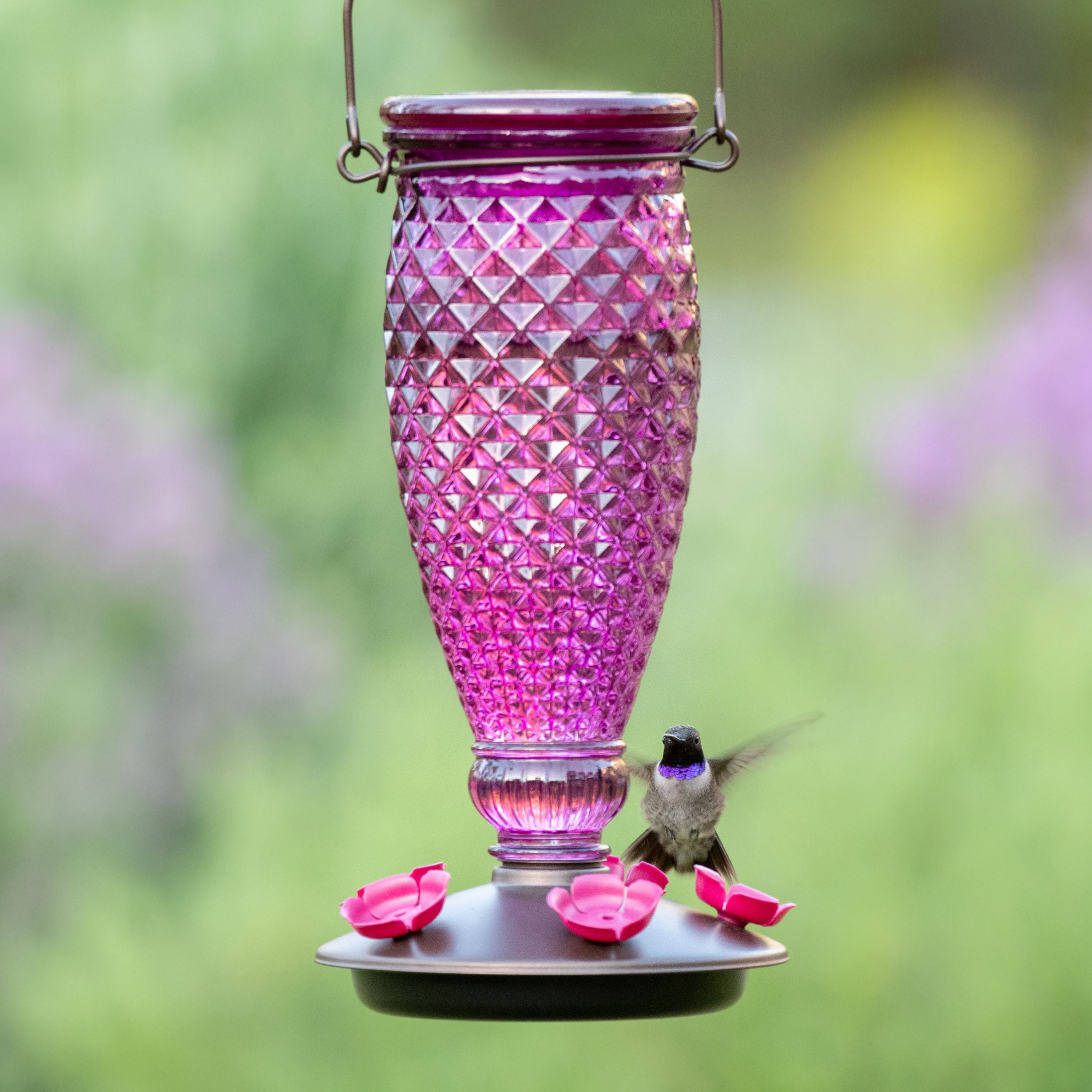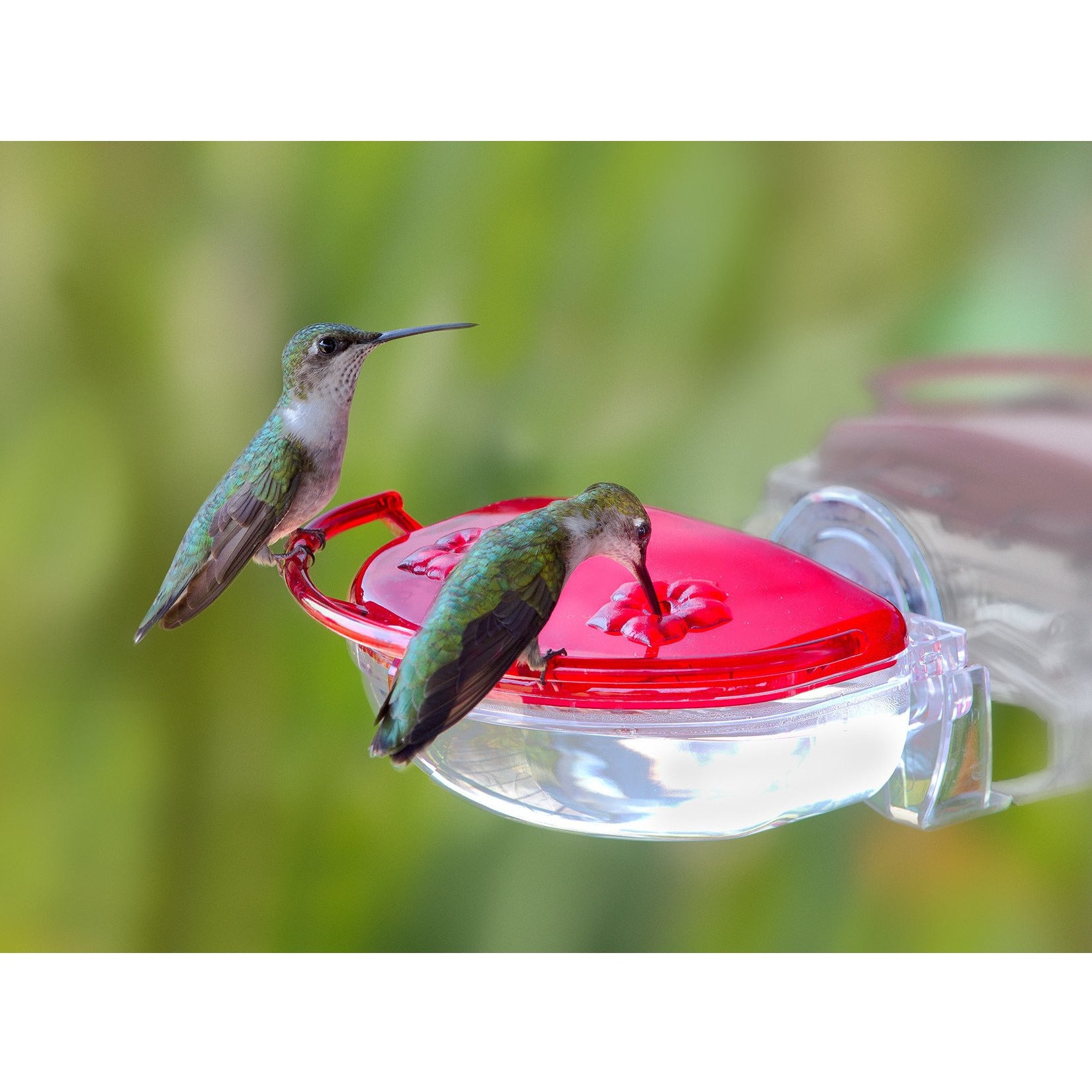

- #Hummingbird feed full
- #Hummingbird feed windows
Several 8- or 16-ounce feeders are far better than one or two large ones.(We recommend at least three feeders per yard.) If two or more feeders are used, put them where birds at one feeder can't see the other.When birds get a flying start they're likely to run into the glass.
#Hummingbird feed windows
There is evidence that hummingbirds seldom hit windows if the feeders are as close to the glass as possible. #Hummingbird feed full
Hang feeders in the shade when possible, but put them in full view of a window-especially one near your breakfast or supper table!.It's egocentric to think the hummingbirds can't survive without you. If you go on vacation or miss a week putting out feeders, don't feel sorry for the birds Ruby-throated Hummingbirds know other food sources for at least a mile in all directions.
/hummingbird-nectar-recipe-7-28f953c41d9d4583b9b7f37248069dce.jpg)
HINT: Glass feeder bottles do not collect as much mold as those made of plastic.

Recent research indicates that bleach and other alkaline cleaners can release toxins from polycarbonate plastics (e.g., Lexan) used in some feeders thus, we no longer recommend chlorine bleach as a cleaning agent. Invest in a curved bottle brush that can reach all parts of your feeders it's also useful to have a pipe cleaner or small brush that will fit into the feeder holes.
A mild solution of white vinegar may be used to kill mold in feeders for week-to-week cleaning. You wouldn't feed your house pets or your children moldy food, so follow the same policy with your hummingbirds. Clean and refill feeders at least twice weekly in hot weather. In cool spring or fall weather, you may be able to go a week without changing the mix, but if it gets cloudy, throw it out. NOTE: Leaving feeders up will NOT influence when healthy Ruby-throated Hummingbirds migrate south their departure (and spring arrival) is linked to photoperiod. may wander in and stay all winter (see Winter Hummingbird Research). Maintain feeders all summer take most down by 1 October, but leave one or two up until Thanksgiving (or even later if you can keep the mix from freezing) stray hummingbirds from the western U.S. Likewise, as the season winds down, re-load each feeder with less sugar water. Early in the season just fill a couple of feeders one-third full no need to waste sugar water until hummers start draining the feeders. DON'T wait until you see your first Ruby-throated Hummingbird of the spring, which may be well after the first ones arrive. and Canada, a week or two earlier along the Gulf Coast (see average arrival dates at Migration Map). Put feeders up by mid-March to attract early migrants-a week or two later in the northern U.S. In hot weather when energy demands are not as high for hummingbirds, you can even cut the mix back to 5:1 or 6:1 and save even more money on sugar. There is no concrete evidence stronger sugar concentrations will hurt hummingbirds, but even a 3:1 mix spoils much faster than 4:1, and 2:1 is too syrupy and a real waste of sugar. The water:sugar ratio of 4:1 is typical of the sugar concentration found in many flowers used by hummingbirds. In any case, let mix warm to room temperature before filling feeders. Some people freeze their mix and safely store it for much longer periods. Store excess mix in the refrigerator for up to 2 weeks (check for fermentation or mold if the mix is cloudy, discard it). (NOTE: There is no scientific evidence that food coloring currently available in grocery stores or in commercial hummingbird nectar mixes is harmful to humans or to hummingbirds, but it IS an additive, so don t use it.) Red food coloring is unnecessary, especially after birds have found the feeders besides, modern hummingbird feeders all have red plastic bases and/or yellow flowers the birds can easily see. Boiling, which slightly retards mold growth, is NOT necessary if your hummingbirds are draining the feeders within three days. Let mix cool and pour into in well-cleaned feeders. Add one cup of table sugar (DO NOT use honey, artificial sweeteners, or other sugar substitutes). Pour four cups of hot tap water into a large pot or pan (glass, enamel, or stainless steel, if possible try not to use aluminum or soft plastics).



/hummingbird-nectar-recipe-7-28f953c41d9d4583b9b7f37248069dce.jpg)



 0 kommentar(er)
0 kommentar(er)
